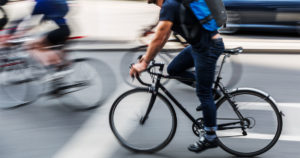May is National Bike Month: Bicycle Safety Tips
May 16, 2022 First established in 1956 and promoted by the League of American Bicyclists, this May is National Bike Month. National Bike Month aims to showcase the numerous benefits of bicycling while encouraging individuals who have never done it before to give it a try. Despite the many benefits and advantages that cycling can offer, it is also critical to remember that it is accompanied by some unique risks and hazards.
First established in 1956 and promoted by the League of American Bicyclists, this May is National Bike Month. National Bike Month aims to showcase the numerous benefits of bicycling while encouraging individuals who have never done it before to give it a try. Despite the many benefits and advantages that cycling can offer, it is also critical to remember that it is accompanied by some unique risks and hazards.
Bicycle Safety: Injury and Fatality Reports
According to the National Safety Council (NSC), the number of preventable deaths associated with bicycling increased by 16% in 2020 and by a whopping 44% in the last decade alone. The council also recorded more than 325,000 preventable nonfatal injuries that individuals sustained while cycling in 2020; this number represents a 5% jump in nonfatal injuries since the year before. Here are some other important injury facts to acquaint yourself with from the NSC:
- Bicycle-related deaths peak during warmer months. Numbers tend to go up in May and stay high through October
- The deadliest month in 2020 for bicyclists was August. The month with the lowest rate of fatal injuries was February
- 1,260 bicyclists were killed in accidents in 2020. 806 died in incidents involving motor vehicles and 454 died in other types of cycling incidents, according to data compiled by the National Center for Health Statistics
- Males accounted for 89% of all bicycle-related fatalities in 2020, which is more than eight times higher than the fatality rate for females
- According to the Consumer Product Safety Commission (CPSC), 425,910 individuals were treated in emergency departments for injuries associated with bicycles and bicycle accessories in 2020
- A meta-analysis determined that wearing a helmet reduces the risk of head injury by 60% and brain injury by 58%
Bicycle Safety Tips for Bicycle Riders and Drivers
The National Highway Traffic Safety Administration has several useful safety tips for bicycle riders and motor vehicle drivers to help everyone get home safely at the end of the day. If you are unfamiliar with the ways you can help keep bicyclists safe, take a moment and familiarize yourself with the administration’s tips below:
- Ride the appropriate size bicycle. If a bike is too big for the rider, it is more difficult to maneuver
- Always wear a helmet that fits properly and is not damaged or cracked
- Cyclists should wear protective equipment that makes them more visible to others on the road, like bright clothing (during the day) and reflective gear at nighttime. It is also a good idea to have a white front light and a red rear light and reflectors on a bicycle
- Ride with one person per seat, with both hands on the handlebars, unless you are signaling that you are making a turn
- Carry all of your items in a backpack or strapped to the back of your bicycle
- Tuck and tie your shoelaces and pant legs so they do not get caught in the bike chain
- Plan your route before you go. If possible, choose roads with less traffic and slower speed limits
- Drivers should never tailgate cyclists. Always wait until it is safe to pass a cyclist when sharing the road
- When the situation calls for it, drivers should give cyclists the right of way
- Give cyclists extra time to travel through intersections
- Be particularly watchful for cyclists when you are making a left turn
- When you are backing up, pay extra attention to cyclists in your path. Children on bicycles can be especially difficult to see because of their smaller size
- After you park, make sure the coast is clear to open your door and exit the vehicle safely
Were You Injured in a Bicycling Accident?
No matter if you are an experienced cyclist or just getting comfortable riding a bike for the first time, safety should always be the top priority. Bicycle accidents are sometimes preventable, but not without taking precautions. Bicyclists are particularly vulnerable to sustaining major bodily injury in an accident. According to the American Academy of Family Physicians (AAFP), some of the most common injuries that cyclists sustain are abrasions, lacerations, contusions, fractures, dislocations, strains, traumatic brain injuries (TBIs) and internal injuries. If you were involved in a bicycling accident and have questions about filing a legal claim, someone at our firm can help. Contact a representative online now.
Philadelphia Personal Injury Lawyers at Galfand Berger, LLP, Representing Injured Individuals Since 1947
If you have a question about filing a legal claim, contact the Philadelphia personal injury lawyers at Galfand Berger LLP today. Call us at 800-222-USWA (8792) or fill out our online form for a free consultation. Located in Philadelphia, Bethlehem, Lancaster, and Reading, we serve clients throughout New Jersey and Pennsylvania, including Allentown and Harrisburg.
 Google Screened
Google Screened
